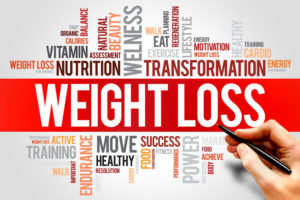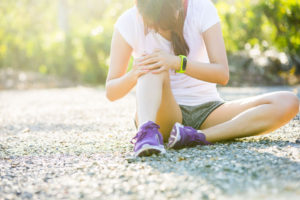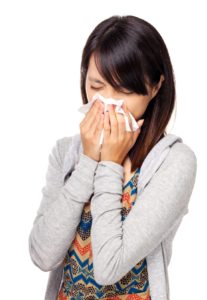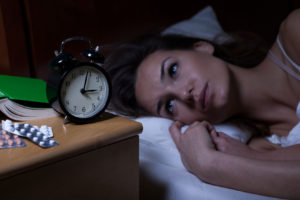By Stephanie Salinas, MSAc., L.Ac.
Every organ in the body serves a purpose, including the gallbladder. Often overlooked and misunderstood, the gallbladder is a vital organ that plays a role in helping the body digest fats, balance hormones, regulate blood sugar and neutralize the large intestine PH balance. At Generations Acupuncture clinic, in Colorado Springs, Colorado, we see many patients who have had their gallbladder diseased or removed. We understand the pain caused by gallbladder disease and can provide a proven solution with acupuncture treatment and herbal protocols.
I am currently reading a fantastic book, Gall Bladder Matters: Keep Yours for Life, written by Catherine Sarchenko and Richard Sarchenko. It’s all about the gall bladder’s role in digestion, metabolism and hormone health. Here are some key takeaways:
- The gall bladder is an accessory organ to the liver. The gallbladder stores bile generated by the liver and concentrates the bile, which makes it more efficient at breaking down food into nutrients.
- Bile is a digestive juice made up of bile salts, cholesterol, and bilirubin. Bile helps to break down fats used for nutrition, in generating hormones and improving brain function.
- Taking antibiotics, statins and estrogen-containing drugs can increase your risk of developing gall stones. Soy-based foods, trans fats, saturated fats and hydrogenated fats can also increase your risk of developing gall stones.
Over 2 million Americans are diagnosed with gallbladder disease each year. Obesity, aging, estrogen treatment, pregnancy, westernized diet and diabetes are consistently associated to a higher risk (cuevas, et al, 2004). Dietary factors have been widely believed to play a pivotal role in the pathogenesis of gallstone disease. High total fat, especially polyunsaturated fats, combined with high refined sugars and low fiber intake were associated with tendency to gallstones. A sedentary lifestyle or physical inactivity was also an important determinant of gallstone disease. Taking antibiotics, statins and estrogen-containing drugs can increase your risk of developing gall stones. Soy-based foods, trans fats, saturated fats and hydrogenated fats can also increase your risk of developing gall stones. According to Sachdeva S, et al.
“Estrogen increases biliary cholesterol secretion causing cholesterol super saturation of bile rendering it lithogenic [stone-forming].”
Gallbladder disease develops due to a sedentary lifestyle, a highly processed diet and certain medications causing the bile to become thickened and cholesterol deposits to become super saturated. These deposits can harden and form gall stones leading to a stiffening of the gallbladder and subsequent inflammation and occasional pain, referred to as acute cholecystitis. Symptoms include:
- gas, nausea and abdominal discomfort after meals and chronic diarrhea
- biliary colic or pain in the upper right abdomen
- pain in the right shoulder
- knee pain
- Light colored stools
- Inability to tolerate fats in diet
- Constipation
- stones or blockage of the gallbladder
According to traditional Chinese medicine, gall bladder colic is associated with gall bladder qi deficiency and its clinical manifestations: dizziness, blurred vision, floaters, nervousness, timidity, tendency to be easily startled, lack of courage and initiative, indecision, sighing, waking early in the morning, restless dreams. A typical tongue will present as pale or normal. A typical pulse will be weak. Acupuncture point GB40 is an excellent point to supplement gall bladder qi, spread liver qi, clear gall bladder heat and damp heat, activate the gall bladder channel, alleviate pain, benefit the joints and regulate the shaoyang.
Cholelithiasis, or the formation of gall stones, can also occur as a result of bile thickening. Most people have minor gall stones. It is when these stones become so large that they have the potential to block the common bile duct, prevent bile from properly flowing to the small intestine that can cause pain so sudden and sharp that medical attention may be required. The pain is usually elicited after the consumption of a high fat meal, which stimulates gall bladder contraction and bile secretion. The patient may also experience jaundice, dark urine, lighter stools, rapid heartbeat, an abrupt blood pressure drop, fever, chills, nausea and vomiting.
According to TCM, gall stones correlates to damp-heat in the gallbladder with clinical manifestations of hypochondrial pain, fullness and distention, nausea, vomiting, inability to digest fats, yellow complexion, scanty and dark yellow urine, fever, bitter taste, dizziness, yellow sclera, tinnitus, irritability, numbness of the limbs, swollen feet, loose stools or constipation, alternation of hot and cold feeling. The tongue will have a thick yellow coating and the pulse will be slippery-wiry-rapid.
When patients experience acute discomfort associated with gallbladder stone formation or blockage of the bile duct, the typical Western medicine approach is gall bladder removal, also known as a cholecystectomy. More than 500,000 cholecystectomy surgeries are performed each year. After the gall bladder is removed, a person typically has a hard time digesting fats, regulating their hormones, regulating their insulin resistance and trouble with large intestine pH balance. Since there is no stored bile, the liver is tasked with providing the small and large intestines with less concentrated bile on-demand. This less concentrated bile is less efficient at breaking down fats and absorbing nutrients. Persons who have had their gall bladders removed would do well to limit their fat intake and stick to healthy omega 3 fats, such as olive oil, and avoid hydrogenated, trans fats and omega 6 fats, typically found in fatty fried foods.
Excellent acupuncture points for gall bladder excess manifestations include Gb24, Gb34, Lr14, Ren12, Extra point Dannangxue, Du9, Ub19, Ub20, Li11, Sj6, Tung’s Dan (11.13), Ganmen (33.11), Minghuang (88.12), Tianhuang (88.13), Qihuang (88.14), Mudou (66.07), Muliu (66.06). These points clear heat, drain damp, strengthen the spleen, regulate the middle jiao, and/or tonifies and regulates gallbladder qi.
Dietary recommendations associated with decreased gallstone occurrence includes: increased consumption of nuts (Almario et al., 2001; Tsai et al., 2004b), vegetable protein (Tsai et al., 2004b), dietary magnesium (Humphries, Kushner, & Falkner, 1999), and Vitamin E (Kris-Etherton et al., 2001; Worthington, Hunt, McCloy, Maclennan, & Braganza et al., 1997). Other foods and spices that help detoxify the liver and stimulate bile emptying include:
- Curcumin (found in turmeric)
- Capsaicin (found in red pepper)
- Curry powder (contains both Curcumin and Capsaicin
- Table beets
- Leafy green vegetables
- Citrus fruits
- Cruciferous-rich foods
- Iron-rich foods
- Fiber
Prescription herbs indicated for gall bladder deficiency include Wen Dan Tang Warming the Gall Bladder Decoction and An Shen Ding Zhi Wan Calming the Spirit and Settling the Will Power Pill. According to Gustafesson et al., “ascorbic acid supplementation has been recommended as a means of reducing bile lithogenicity, thereby reducing gallstone formation.” Cataplex C from Standard Process can also protect against gall stones. Herbs indicated for gall stones include yin chen hao tang Artemisia Capillaris Decoction. Betafood from Standard Process is also made from beet and contains beet leaf juice to aid in gallbladder congestionCholacol from Standard Process contains purified bile salts and is indicated for post-cholecystectomy. At Generations Acupuncture Clinic, we have herbalists who can dispense the aforementioned herbs and devise custom formulations for your specific health needs. Book your next holistic health appointment at Generations Acupuncture in Colorado Springs, Colorado.
Gall stone formation and gallbladder inflammation can be detected via ultrasound or blood test. Diagnostic imaging includes: abdominal ultrasound; endoscopic ultrasound (EUS); oral cholecystography; a hepatobiliary iminodiacetic acid (HIDA) scan; computerized tomography (CT); magnetic resonance cholangiopancreatography (MRCP) or endoscopic retrograde cholangiopancreatography (ERCP). Gallstones discovered using ERCP can be removed during the procedure. blood tests may also be helpful in revealing infection, jaundice, pancreatitis or other complications caused by gallstones. Less invasive treatment options should be discussed before the topic of a cholecystectomy is approached. Lithotripsy, or shock wave dissolution of gallstones, is a new procedure that uses a highly focused sound wave to break the stones into tiny particles which then pass through the cystic duct to the common duct and into the intestine.
Screening and lifestyle changes are the best approach to preventing gall stone formation. It’s important to address biliary colic at the onset- when there is enough time to address with diet, acupuncture and herbs. Once biliary colic and pain is chronic and consistent, there may not be enough time to address holistically, in which case gallbladder removal may be the only option.
Acupuncture is an excellent way to smooth the flow of qi through the blood, channels and organ symptoms. Herbal medicine can help expedite the healing process by supporting the body with nutrition. We offer both acupuncture and custom formulated herbs to help treat those with gallbladder disease. Make your next holistic health acupuncture appointment at Generations Acupuncture clinic, in Colorado Springs, Colorado 80909.
Resources
Cuevas A, Miquel JF, Reyes MS, Zanlungo S, Nervi F. Diet as a risk factor for cholesterol gallstone disease. J Am Coll Nutr. 2004 Jun;23(3):187-96. doi: 10.1080/07315724.2004.10719360. PMID: 15190042.
Gustafsson U, Wang FH, Axelson M, Kallner A, Sahlin S, Einarsson K. The effect of vitamin C in high doses on plasma and biliary lipid composition in patients with cholesterol gallstones: prolongation of the nucleation time. Eur J Clin Invest. 1997 May;27(5):387-91. doi: 10.1046/j.1365-2362.1997.1240670.x. PMID: 9179545.
Sachdeva S, Khan Z, Ansari MA, Khalique N, Anees A. Lifestyle and gallstone disease: scope for primary prevention. Indian J Community Med. 2011 Oct;36(4):263-7. doi: 10.4103/0970-0218.91327. PMID: 22279255; PMCID: PMC3263145.
Sarchenko, Catherine, and Richard Sarchenko. Gallbladder Matters Keep Yours for Life. Selene River Press, 2016.


 The Acupoint Injection Therapy Weight Loss Solution
The Acupoint Injection Therapy Weight Loss Solution Summer Is In Full Swing!!!
Summer Is In Full Swing!!! Inflammation Causes, and How To Use Diet To Improve Health
Inflammation Causes, and How To Use Diet To Improve Health When some eastern countries think of the different seasons of the year they use yin and yang to describe their characteristics. Winter is the season of the most yin; meaning it is more cold, more dark, and everything is more consolidated. They also assign different acupuncture meridians to the different seasons. They made these assignments based on their observations of the seasons and how the body reacts to them. The meridian of winter is the kidney meridian. The kidney meridian is named this because; it does connect with the kidney organ. In oriental medicine the kidney meridian is in charge of the function of the kidneys themselves, but it also governs the function of the ears, the structure of the bones, reproduction, and the vital energy of the body.
When some eastern countries think of the different seasons of the year they use yin and yang to describe their characteristics. Winter is the season of the most yin; meaning it is more cold, more dark, and everything is more consolidated. They also assign different acupuncture meridians to the different seasons. They made these assignments based on their observations of the seasons and how the body reacts to them. The meridian of winter is the kidney meridian. The kidney meridian is named this because; it does connect with the kidney organ. In oriental medicine the kidney meridian is in charge of the function of the kidneys themselves, but it also governs the function of the ears, the structure of the bones, reproduction, and the vital energy of the body. During this time of year everyone is getting out and enjoying the outdoors. If you injure yourself somehow while playing sports, climbing, running, or cycling keep several things in mind.
During this time of year everyone is getting out and enjoying the outdoors. If you injure yourself somehow while playing sports, climbing, running, or cycling keep several things in mind.
 Right now it’s spring. With daylight hours increasing and everyone becoming more active, it’s a good time to remember good habits for sleep. So many people are having trouble with insomnia. One in 3 Americans suffer from some form of insomnia. There are 80 different sleep disorders identified in the medical world. I get asked all the time if
Right now it’s spring. With daylight hours increasing and everyone becoming more active, it’s a good time to remember good habits for sleep. So many people are having trouble with insomnia. One in 3 Americans suffer from some form of insomnia. There are 80 different sleep disorders identified in the medical world. I get asked all the time if 